For the hunter seeking a profound connection to the wild, one pursuit stands above the rest: deer tracking. It is a rigorous challenge that transforms the mundane walk in the woods into a real-time mission, demanding acute mental focus and physical endurance. It requires grit and persistence, but the rewards are unmatched: a lifetime of superior woodsman skills and the thrill of outwitting a mature deer.
To inspire you to take that first step onto the trail, we sat down with renowned Maine Master Guide and author of several books on tracking whitetails, Hal Blood, who has spent over 40 years deciphering the language written in the snow by mature whitetails. Blood, the founder of the Big Woods Bucks system, stresses that tracking is a science and the core of true wilderness hunting.

“This is more of an accomplishment,” Blood says, comparing tracking down a deer in the North Woods to shooting a trophy buck from a bean field, calling the latter “no challenge.”
The goal of tracking is to catch up to the buck, which means moving fast and interpreting every piece of sign the deer leaves behind. Blood emphasizes that you are “living the life of that buck because he has written it in the snow for you.”
If you are thinking of trading your tree stand for a pair of hiking boots, here are fundamental lessons from Blood on how to begin tracking deer.
TL;DR: Deer tracking is one of hunting’s most challenging and rewarding pursuits—an art that blends skill, endurance, and the ability to read the woods. Legendary Maine guide Hal Blood, founder of Big Woods Bucks, teaches that tracking is “living the life of the buck,” interpreting every print, stride, and sign in the snow. Learn to recognize buck vs. doe tracks (dew claws tell the truth), age tracks by snow texture and ice, and read a buck’s stride and gait to know his pace and mood. Blood’s philosophy: keep moving, stay persistent, and use tools like onX Hunt’s GPS, Waypoints, and Tracker to mark fresh sign, record your path, and recover wounded deer. For hunters ready to trade the tree stand for the trail, tracking offers a deeper connection to the wild—and the ultimate test of woodsmanship.
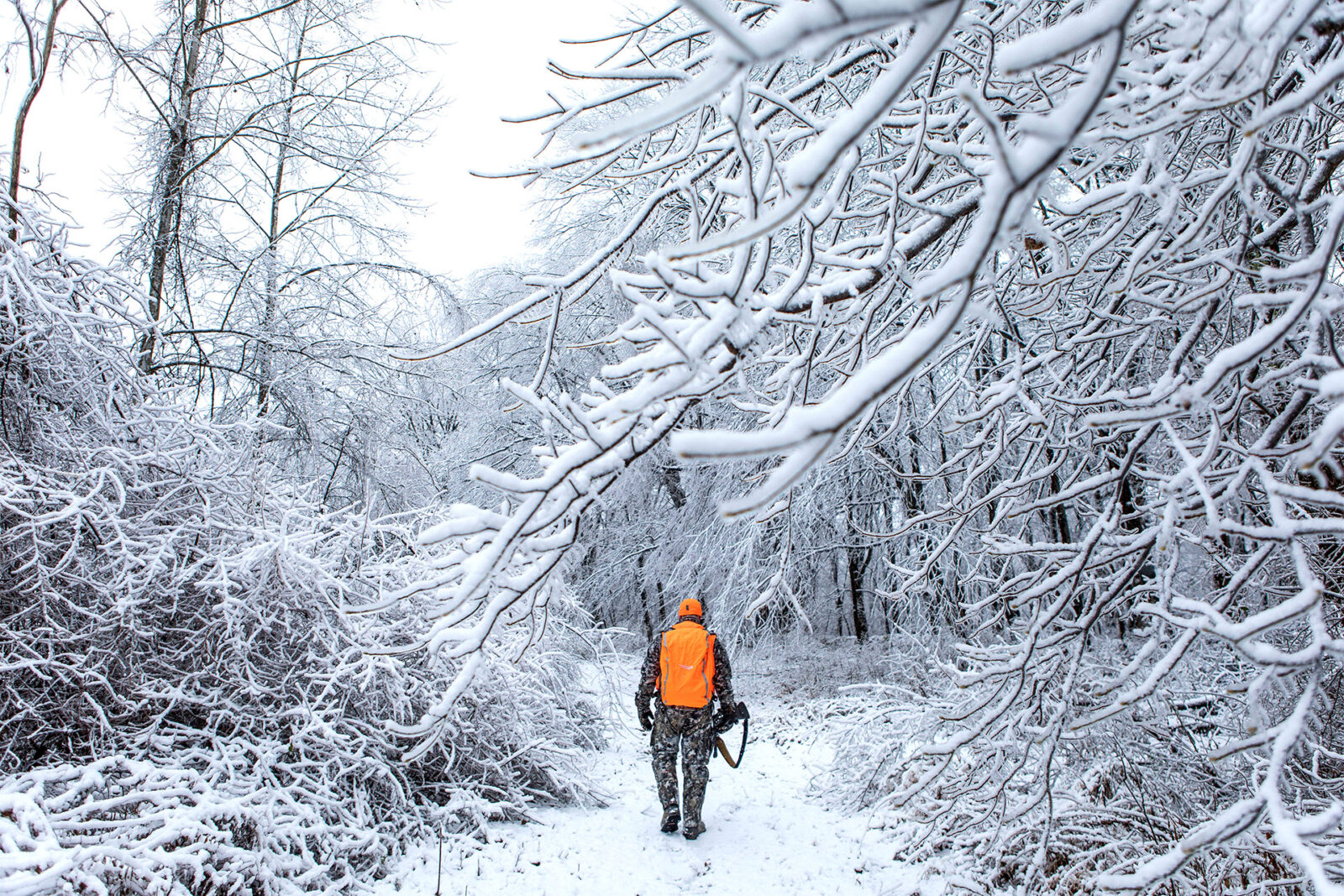
Doe vs. Buck Tracks: Deciphering the Print
The first skill a novice tracker yearns to learn is how to tell if a track belongs to a mature buck, a doe, or a smaller deer. While Blood recommends new trackers follow just about any lone track to gain experience, as even catching a young buck is a major accomplishment, understanding the differences between buck and doe prints is crucial for targeting larger animals.
Size and Geography
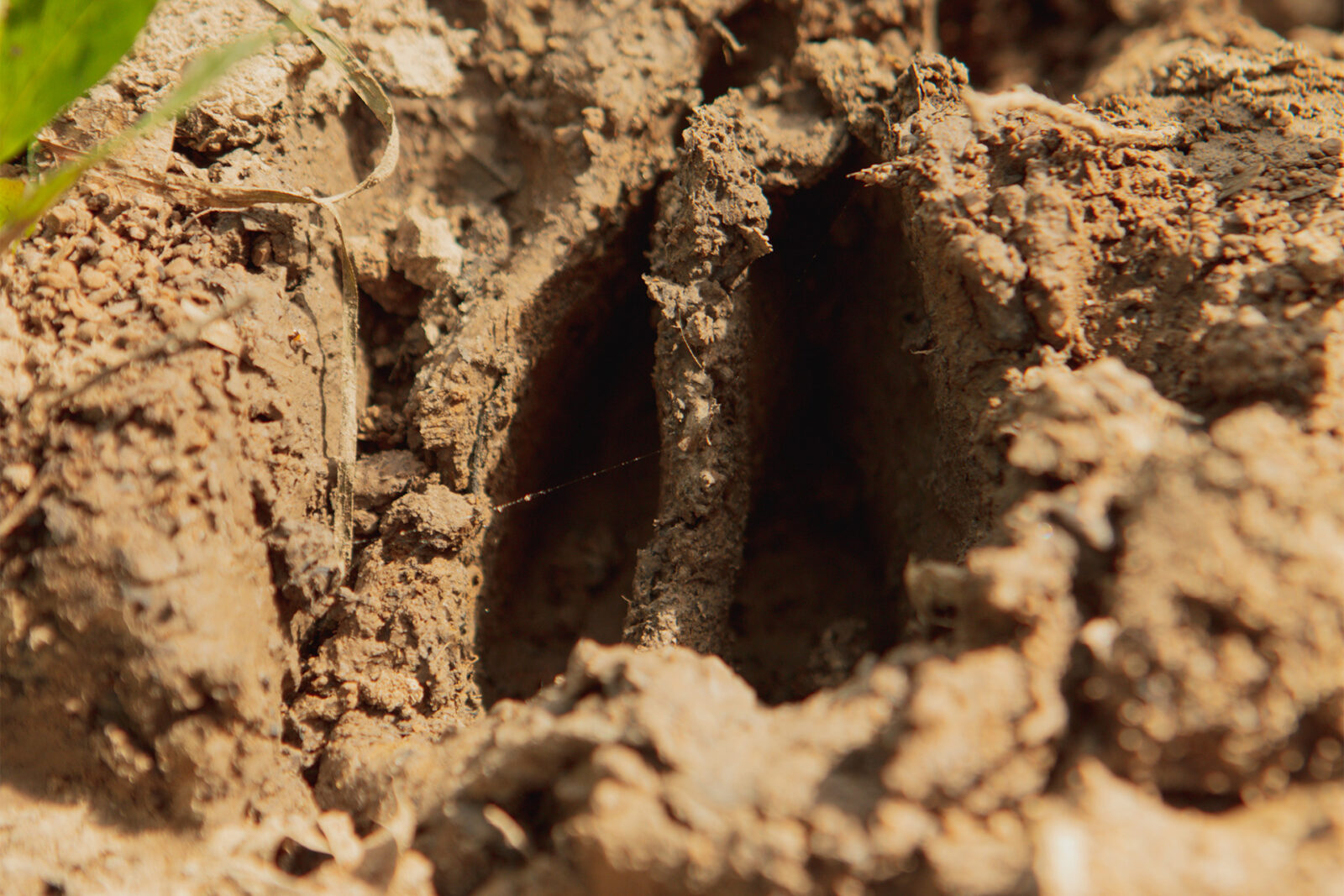
One clue for deciphering buck vs doe tracks is size, but track size can be highly dependent on the area you are hunting. For example, the northern borealis whitetail subspecies, found in Maine and surrounding boreal regions, has the largest bodies and the biggest tracks of any whitetail deer.
“We’re hunting for the big old deer that are going to weigh over 200 dressed,” says Blood, “but if you’re all the time looking for antlers, you’re going to have a lot of seasons where you ain’t going to have a deer because it don’t work that way.”
When Blood is on the trail of a North Woods buck, he’s looking for tracks that start at about three inches long. More specifically, he looks for a track that is at least three inches long by three inches wide. However, monster old buck tracks can measure four inches long or better.
Of course, most hunters won’t be coming across tracks that size outside of Maine, so it’s important to start paying attention to the tracks in your own hunting areas to know what’s big for a big deer.
Using the notes and/or photo feature when dropping a Waypoint (as well as the “Tracks” icon) is a quick and simple way to document the track sizes you come across in the woods.
The Dew Claw Tells All
Nearly everyone enjoys learning that “one simple trick” that boils down what they want to know into an unforgettable nugget. Thankfully, we have that simple trick when it comes to tracking deer and deciphering a buck from a doe: The dew claws are the most definitive feature distinguishing a mature buck from a doe.
- Doe Dew Claws: If a doe’s dew claws show, they will almost always be inside or the same width as the main toe print.
- Buck Dew Claws: As bucks mature (typically over four-and-a-half years old), their dew claws will appear wider than their toes and often be set outside the print. Critically, the buck’s dew claw prints are often perpendicular (90 degrees) to the direction of the main hooves. The older the buck, the further back the dew claw prints will be set, sometimes as far as two to two-and-a-half inches behind the main print.
The Stance and Gait
Another universal sign of a mature buck is its wide stance. Beyond the hoof print, the way a deer walks can help indicate its sex.
A doe walks “more one foot in front of the other because their bodies aren’t wide,” says Blood. This results in prints that are, at most, only a few inches side-to-side. Bucks, however, grow heavier chested and are inherently “thicker through them,” says Blood, causing their chest to widen out sideways. This widening means their prints are going to be further apart, a distance referred to as the “stance of the buck.” A wide stance, often eight to 12 inches between the prints, is indicative of a good buck.
Finally, mature bucks are “toe draggahs.” The real old bucks will drag their feet all the time, even in just an inch or two of snow. Blood calls them “cross-country skiers” because the track often looks like two slide marks in the snow.
A wide stance, often eight to 12 inches between the prints, is indicative of a good buck.
Aging Deer Tracks: Hunting the Clock
For most hunters, determining the age of a track is the most difficult part of deer tracking. Many assume a track is old if it wasn’t made within the last hour. However, Blood operates on a different timetable: “I call any track made the previous night a fresh track. Most likely I’m going to catch up to that buck that day.”
Aging a track is a science that depends on weather, temperature, and experience. To gain any proficiency at aging tracks, it’s best to read through Blood’s book or even take one of his deer tracking clinics.
Reading the Water and Ice
When a deer steps into wet ground, water seeps up into the print. Blood uses the resulting ice formation as a guideline:
- Frost Crystals and Deep Freeze: If the water is “really froze up” and contains frost crystals, the track was likely made earlier in the night, meaning the buck could be a long distance ahead.
- Minimal Ice: If there is only “a little bit of ice in it,” he says, and the temperature isn’t extremely cold, you may have a fresh track, perhaps only a half hour to an hour old.
Checking the Snow’s Condition
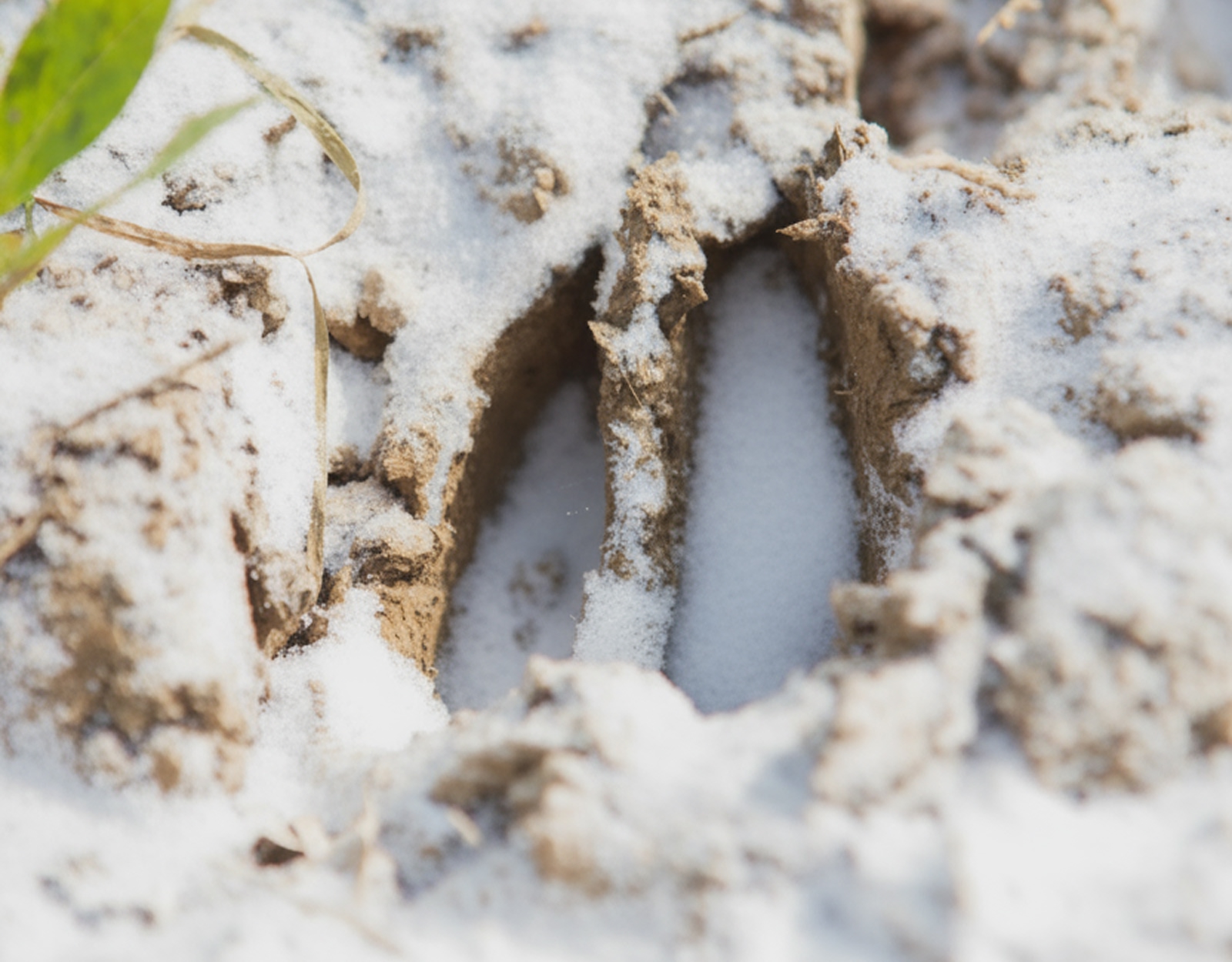
When tracking in snow, you need to feel the firmness of the track.
- The Loose Track: A truly fresh track—perhaps made only minutes or an hour prior—will feel all loose with “no resistance in the side of it” when you quickly tap the edges with your fingertips. This is essential if you bump a buck and his fresh print gets confused with older tracks in the area.
- The Set-Up Track: If the track was made during the night or is at least an hour old and the weather is cold, the sides of the track will be firm to the touch, or “set up,” as Blood notes.
- The Crispy Track: A track with “clearly defined edges and trailing puffs or clumps of tossed snow” is what Blood calls a “crispy track,” a sign the deer passed through likely within the last 12 hours or so.
Interpreting the Stride
The stride length immediately tells the tracker what the deer is doing. When a buck is traveling, “his stride is going to be longer and he’s more deliberate,” says Blood. The same deer could have a stride ranging from a foot and a half up to three feet.
If you encounter a three-foot stride and the buck is “stepping out,” Blood advises: “You better put your head down and start stepping out or you’ll never catch him.” Blood emphasizes the need for continuous movement because “I don’t care how fast you can walk or even jog, you ain’t moving as fast as a buck just walking along.” When a buck is puttering or feeding, his stride shortens up. Deer rarely run full pelt as they are not going to burn up extra energy if they don’t have to.
“I don’t care how fast you can walk or even jog, you ain’t moving as fast as a buck just walking along.”
Hal Blood
Following Deer Tracks in Snow and Finding Sign on Bare Ground
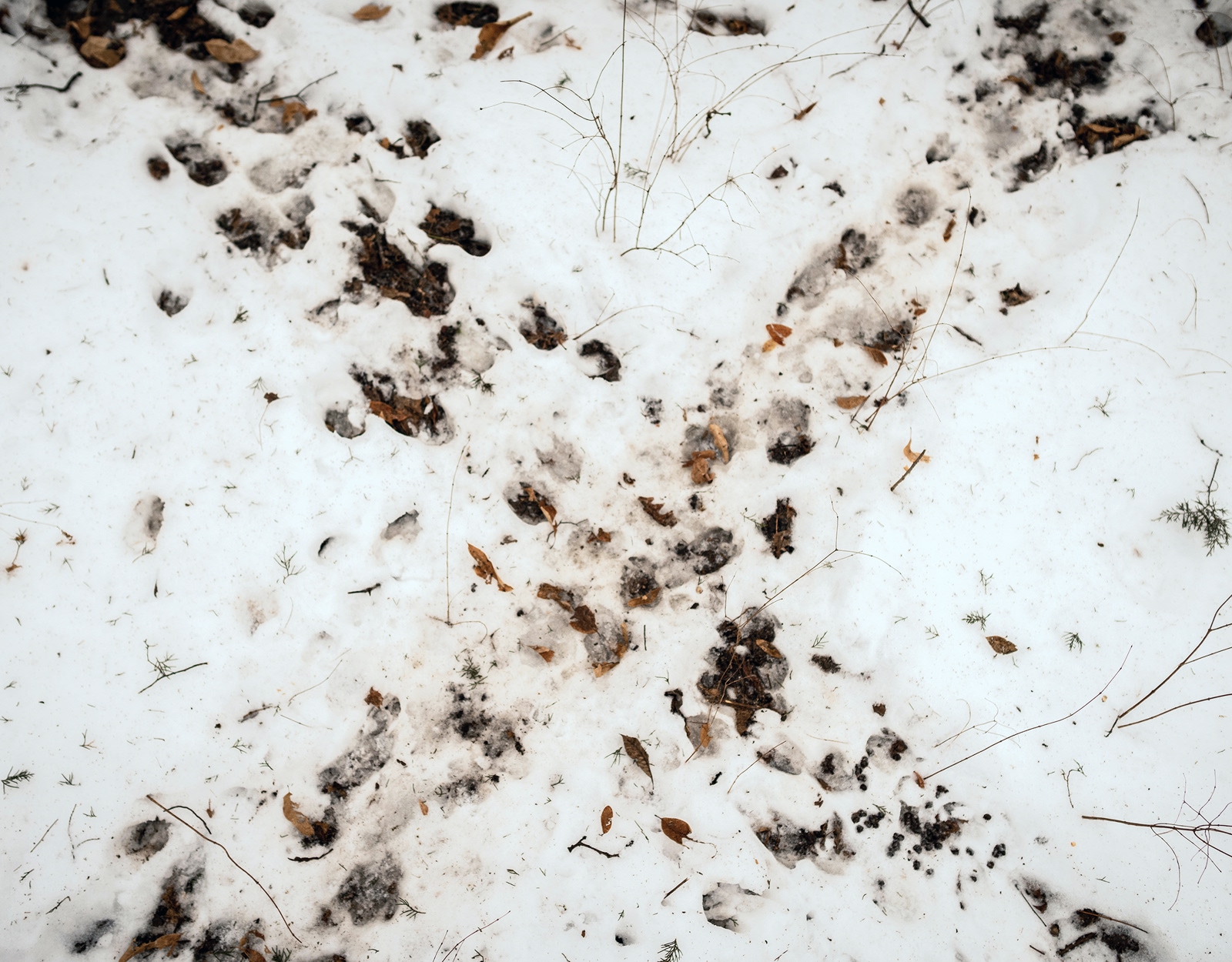
Tracking success is intrinsically tied to snow and soft ground. For the average person, tracking in dirt and leaves is too difficult. Blood notes that if you are hunting bare ground, you shouldn’t expect to shoot the deer you’re tracking.
The Necessity of Snow
Tracking on snow is the primary method, allowing the hunter to follow the “life of that buck,” as Blood puts it. Because tracking requires gaining ground while the buck is stopped, Blood famously advocates for pushing the deer, even jumping him out of his bed, noting: “I don’t care if I bump into him and jump him out of his bed and he runs off because now I got a buck that’s pretty close to me.”
The tracker must move quickly, at their fastest comfortable pace. Blood warns against running: “You should never run in the woods,” as it leads to exhaustion and windedness.
Tracking Deer After the Shot
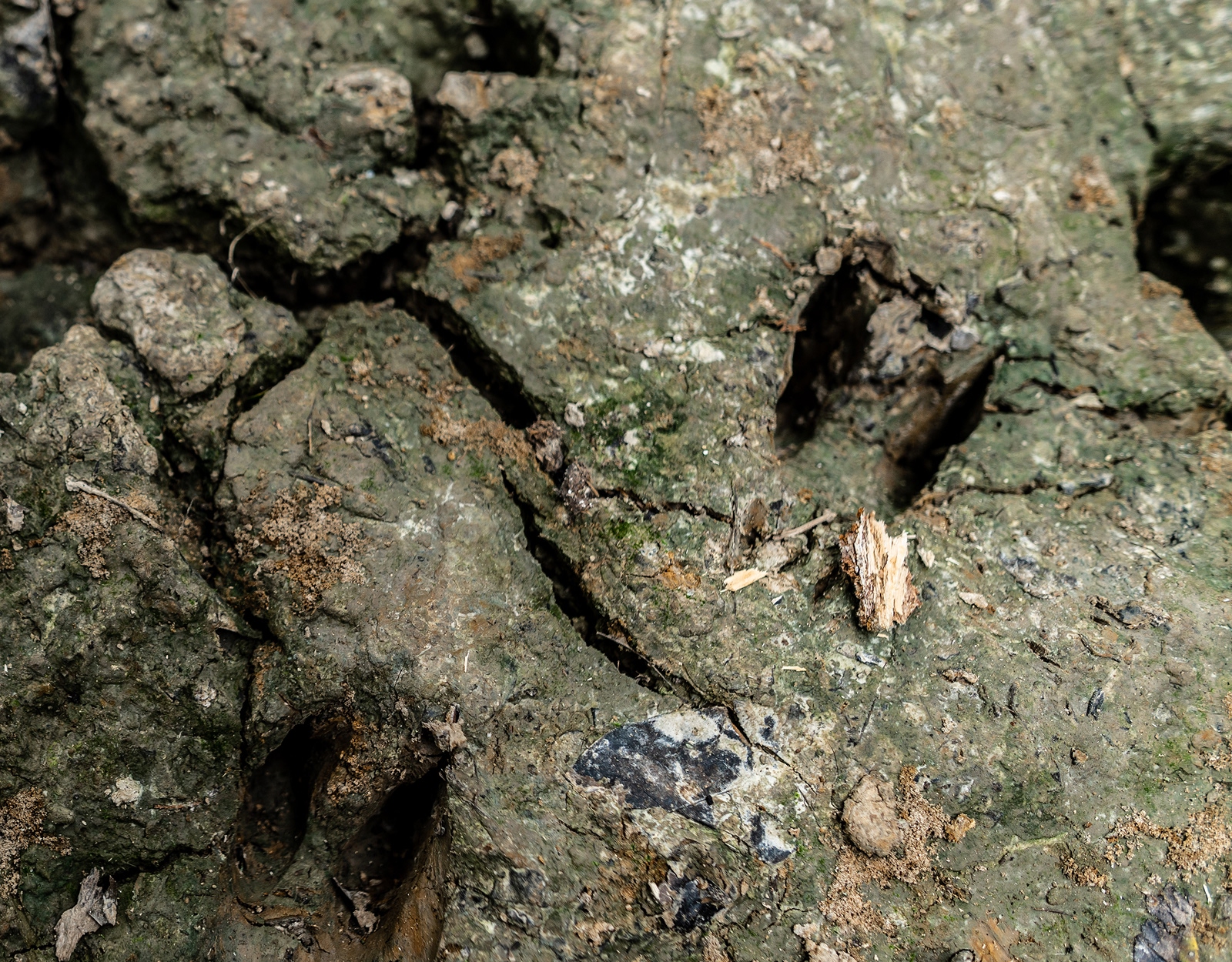
If you “didn’t hit him right” and are trying to track a wounded deer, you might already be a half-step behind. Blood’s advice runs counter to what you may hear elsewhere: “Pressure him and wear him down.”
Reading the Blood Trail
Once the deer runs, the immediate focus shifts to deciphering the sign left behind. Blood notes that if you are tracking in snow, it is generally “pretty easy to read blood sign.”
The initial tracks should be inspected for the type of sign present, which indicates the severity of the wound:
- Blood Type: Check whether the blood is spraying out or it’s just dripping out. Frothy blood suggests a lung hit.
- Tissue/Bone: Look for any bone chips or other tissue along the way.
Even if the shot was well-placed, a visible blood trail is not guaranteed. The absence of blood does not necessarily mean a clean miss but rather emphasizes the need for continuous tracking.
The Strategy: Pressure, Not Patience
A common piece of advice given to hunters is to wait an hour or more before taking up the trail of a wounded animal. Blood rejects this conventional wisdom, especially in the Big Woods: “People say wait an hour. Well, you don’t have an hour to wait, really.” If you were skilled enough to catch up to the buck when he wasn’t wounded, there is a good chance you can find him again when he is.
Blood’s definitive strategy is: “Pressure on him and wear him down.”
- Keep Moving: If you let the deer rest, “he’s got the advantage,” says Blood. A wounded deer, even if only “legshot,” will get tired fairly easily if you keep the pressure on.
- End Goal: The goal of maintaining pressure is to force the animal to stop. He is going to “stand there that extra second one time to get another shot into him.”
Blood stresses that persistent movement is the key to recovery, even if it means taking a shot that is less than ideal to finish the job: “It’s about getting something else into him” to prevent losing him. The primary mission is recovery, and relentless pursuit is the surest way to achieve it. This aggressive tracking method is even more critical if the incident happens late in the day when daylight is limited.
The Call to the Trail
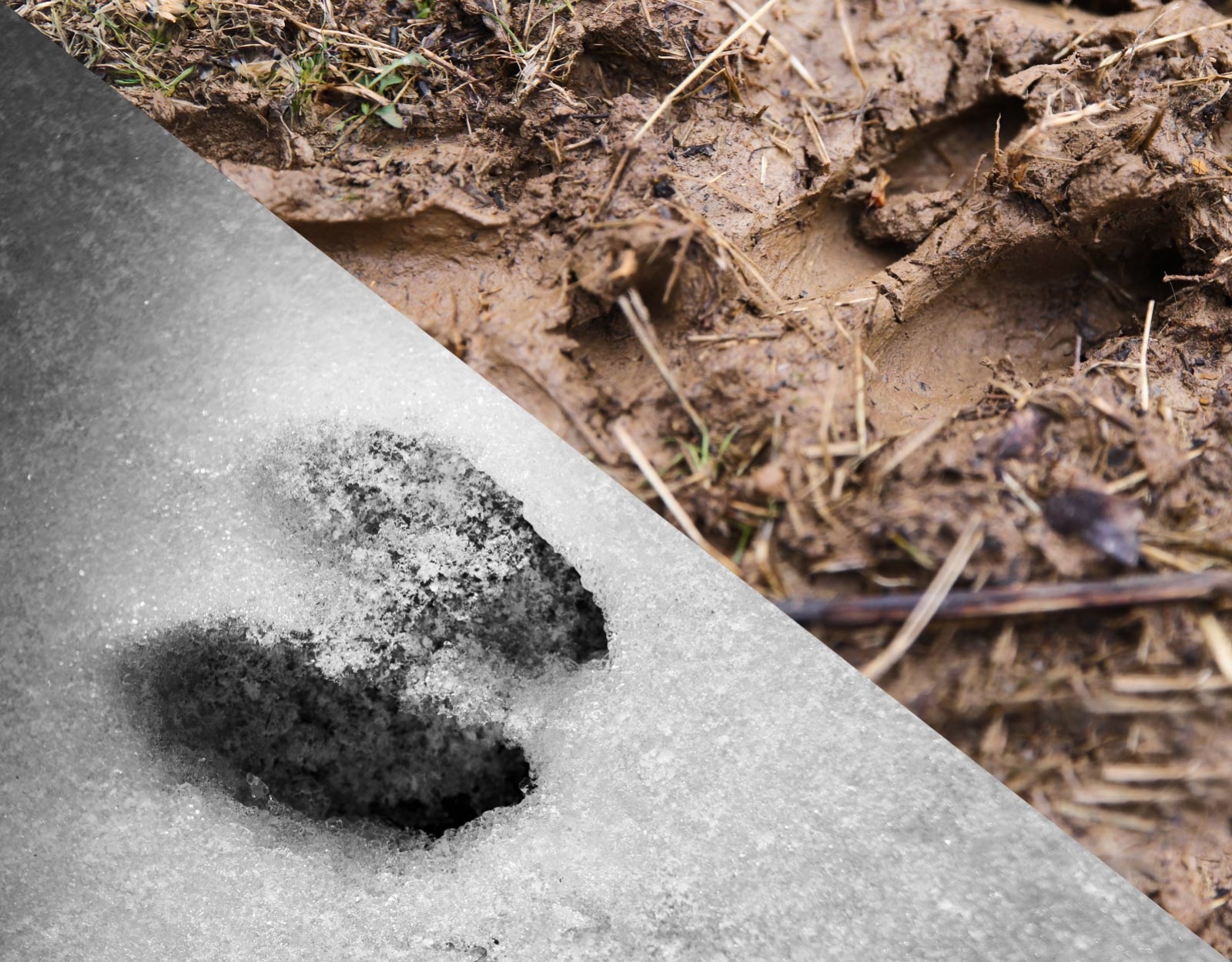
Tracking is demanding; it requires long days, often covering distances in the realm of 10 to 12 miles in all types of weather. But the experience can be addictive.
Blood’s philosophy is simple: Persistence is the most important principle. “You got to be a special person. You got to have grit to do it.” Blood often reminds people: “You either hate it or you love it, there’s not usually much in between.”
If the challenge and adventure resonate with you, the path to superior woodsman skills is clear. Take the time to learn the language of the track, and you will begin to experience the woods like never before.
Deer Tracking FAQs
Whitetail tracks typically measure about two inches, with a pointed end and a rounded end. Their appearance can vary depending on the age of the track, the age of the animal, the sex of the animal, the terrain, and recent weather. On softer ground, you may see two dots off the back of the track–these are made by a buck’s dew claws.
A lot of variables go into aging deer tracks, including weather, temperature, and terrain. A quick tip to help age deer tracks in snow, for example, is to see how soft or hard the edge of the track is. Softer? Fresher track. More rigid? Older track.
Whitetail tracks have a pointed end and a rounded end. The pointed end indicates the direction of travel.
Terrain and weather mean everything in deer tracking. For example, snow offers the best deer tracking conditions. Mud is second-best. Meanwhile, bare ground tracking represents a formidable challenge, even for experts in deer tracking.
Yes, GPS is an effective tool for deer tracking, especially with platforms like onX Hunt. When following deer tracks:
- Drop Waypoints on fresh tracks.
- Use the Tracker feature to record your (and the deer’s) path.
- Overlay property boundaries and wind direction for a comprehensive tracking strategy.